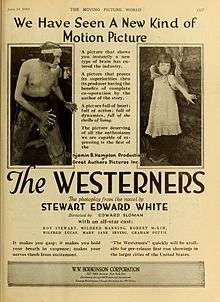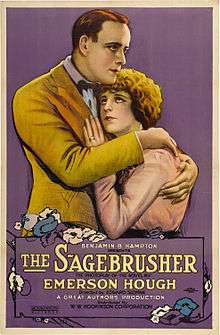Edward Sloman



Edward Sloman (19 July 1886, London - 29 September 1972, Woodland Hills, California) was an English silent film director, actor, screenwriter and radio broadcaster. He directed over 100 films and starred in over 30 films as an actor between 1913 and 1938.
Career
Sloman grew up in London's West End but left home at age 19 to become an actor. He spent several years in the British theater and later became a director in both legitimate theater and vaudeville. After a quarrel with a powerful booking agent which resulted in his being effectively shut out of the British theatrical circuit, Sloman took an actress friend's advice and headed for Hollywood, emigrating in 1915.
Introduced to director Wilfred Lucas at Universal Pictures, Sloman was soon employed as an actor paid $7.50 a day. To make ends meet, he wrote scenarios, which he sold for $25 apiece. Sloman wrote a script for a war film which was acknowledged by Thomas H. Ince, a major film director in Hollywood at the time, and on the basis of his work was hired by the Philadelphia-based Lubin Manufacturing Company to direct at Lubin's West Coast studio on Coronado Island near San Diego, beginning his first film in late-1915. Lubin closed its Coronado studio in 1916 due to the company's declining fortunes, which were intertwined with those of the collapsing Motion Picture Patents Company. Sloman quit Lubin altogether and went to the American Film Company ("Flying A") studio in Santa Barbara, where he assumed an important role in that company's expanding feature-length film output (especially in directing several films starring Mary Miles Minter) and also directed other prestige projects such as the serial The Sequel to the Diamond from the Sky (1916). American ceased production in early 1919, so Sloman went to independent producer Benjamin B. Hampton and was given the direction of a big-budget western of that year, The Westerners (1919). The film was quite successful and led to Sloman securing steady employment with other independent producers.
Sloman was eventually hired by Universal Pictures in late 1924. His fourth Universal release, His People, 1925, a sentimental yet powerful Jewish-American melodrama, was an enormous hit and secured Sloman's position within the studio, where he remained for five years.
Sloman's most successful film in 1927, Surrender, starred Russian actor Ivan Mozzhukhin in a story of a beautiful Jewish girl whose Russian village is invaded by Cossacks, and she is given a choice by the Cossack chieftain of either sleeping with him or seeing her village destroyed. Sloman's The Foreign Legion and We Americans (1928) were also well received, but his last silent (actually a part-talkie with a music-and-effects track), the restrained and poetic Girl on the Barge (1929) garnered critical ridicule for its clumsily inserted talking sequences and was a financial disaster. Sloman then left Universal, made a few films for lesser companies such as the exploration thriller The Lost Zeppelin (1929) for short-lived Tiffany-Stahl Productions and Hell's Island (1930) for Columbia Pictures, and went under contract to Paramount Pictures. There he directed several important early talkies in less than two years, such as The Kibitzer (1930, with Harry Green playing the part originally written for Edward G. Robinson on the stage), The Conquering Horde (1931, with Richard Arlen), the celebrated quasi-horror film Murder by the Clock (1931, with Lilyan Tashman and Irving Pichel), Gun Smoke (1931, also with Arlen), and His Woman (1931, with Gary Cooper and Claudette Colbert). His career declined rapidly thereafter, and he directed only four more feature films between 1932 and 1938.
Post-cinema work
After directing over 100 films and starring in over 30, Sloman made his last film in 1938 and in 1939 left the film industry to enter radio broadcasting as a writer, producer and director.
Unfortunately the majority of Sloman's works have been lost. However his 1927 Universal silent Alias the Deacon starring Jean Hersholt is held by the Library of Congress.
He died in Woodland Hills, California in 1972 aged 86.
External links
| Wikimedia Commons has media related to Edward Sloman. |